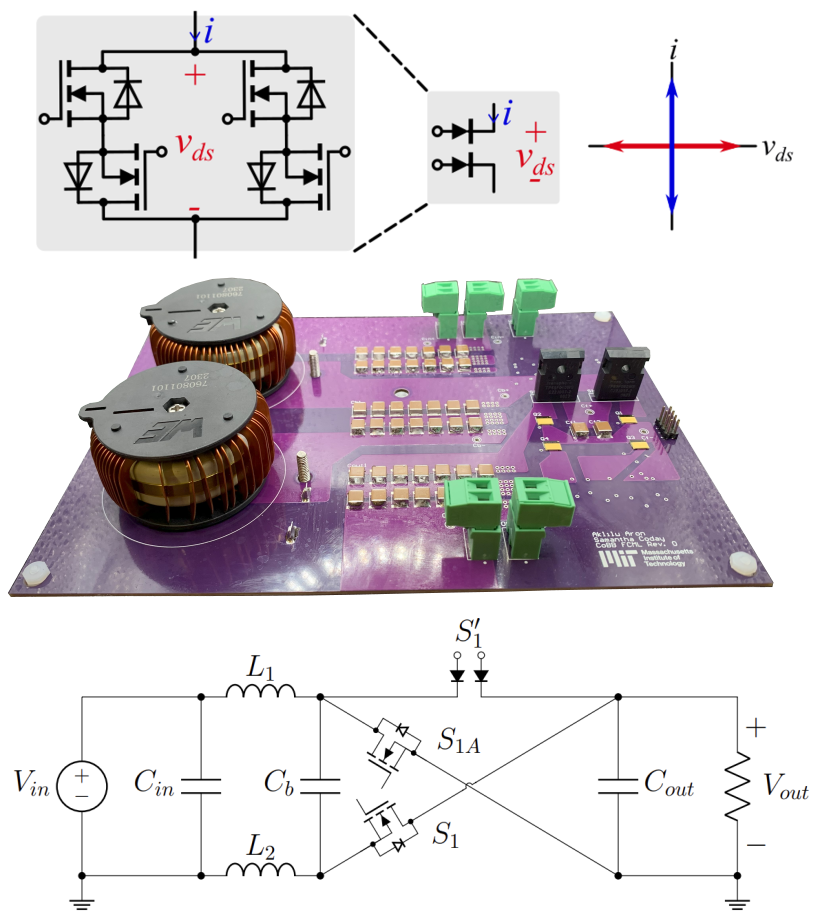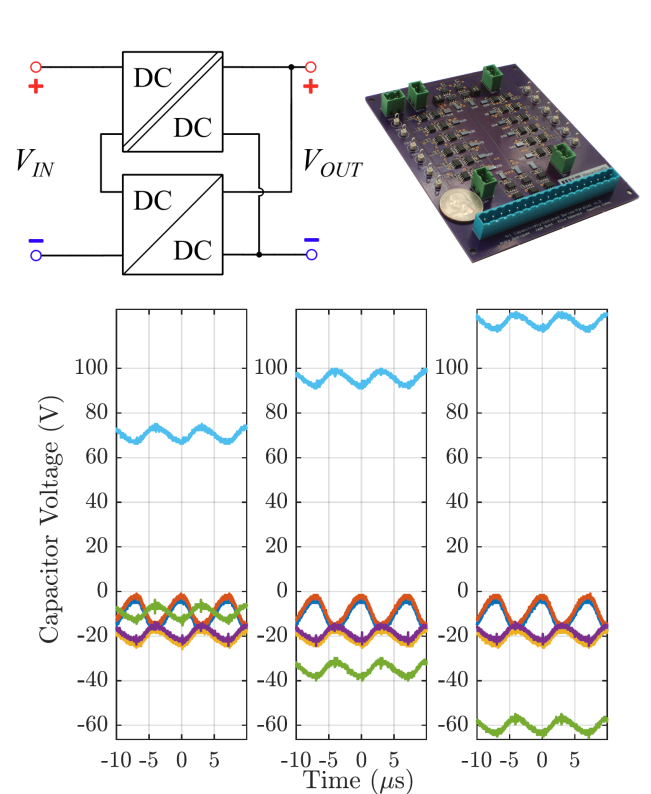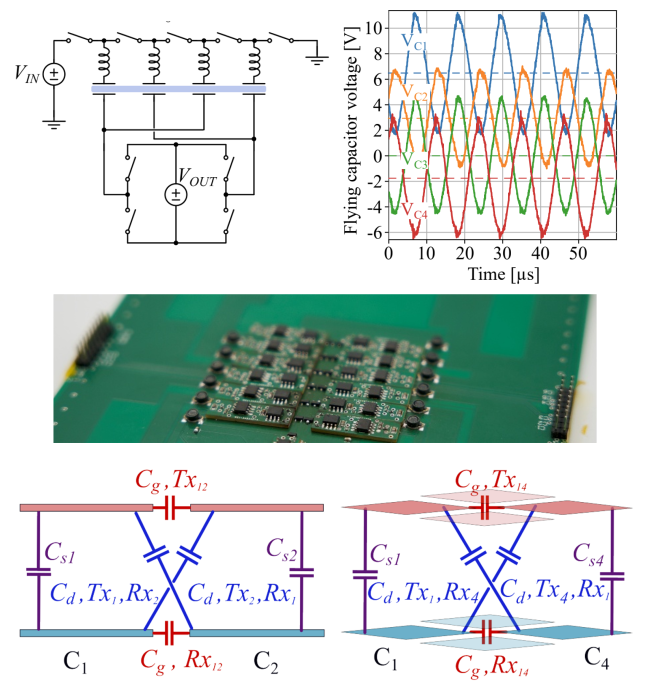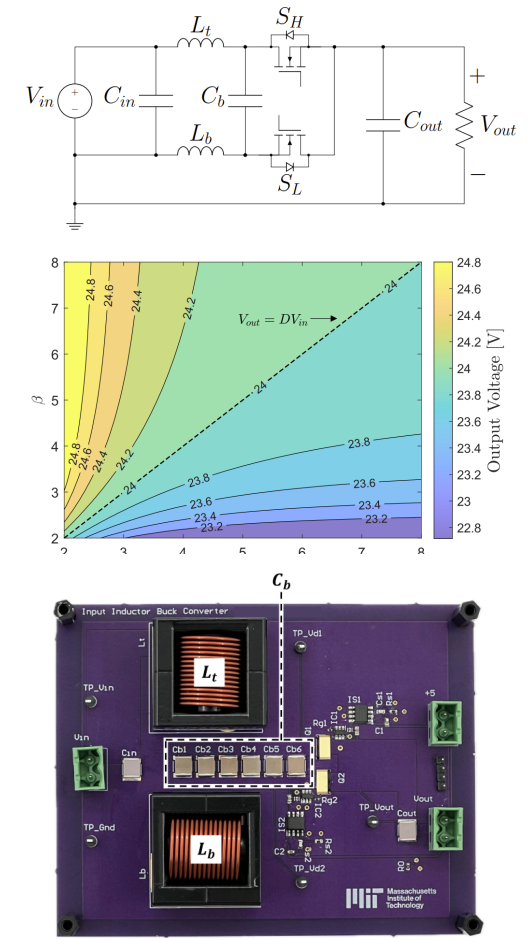The Coday Research Group explores next-generation power converters by combining high-energy density capacitors with advancements in wide bandgap semiconductors. Our goal is to design next-generation converters, with increased efficiency and power density, motivated by areas of increased electric energy growth, such as electric vehicles and data center power delivery.
Below you’ll find highlights of our recent research. This list is not exhaustive and is updated regularly.

Implementation of Novel Monolithic Bidirectional Switches
Our research investigates monolithic bidirectional GaN devices, which provide bidirectional blocking capability in a single component. Compared to traditional back-to-back configurations, these devices can achieve significantly lower losses. We focus on characterizing their performance and exploring their integration into new converter topologies to expand operating ranges and improve overall efficiency.
Relevant Publications: Analysis and Design of a Condensed Buck-boost Converter Utilizing Monolithic Bidirectional GaN
Switches

Capacitively-isolated Hybrid Switched Capacitor Converters
We develop high-conversion-ratio system architectures that avoid redundant energy processing by leveraging series-input, parallel-output configurations. Our work has introduced a family of capacitively isolated converters capable of operating at and above resonance. These innovations enable efficient stacked architectures while maintaining high power density.
Relevant Publications: The Design and Analysis of a Capacitively-Isolated Series-Parallel Converter, The Analysis and Design of a Resonant Capacitively-Isolated Cockcroft-Walton Converter

Capacitive Wireless Power Transfer
Capacitive wireless power transfer provides an alternative to traditional inductive-based methods, offering the potential for lower cost and reduced weight in applications such as electric vehicle charging. Our research focuses on N-plate topologies, which employ a greater number of coupling capacitors to minimize switch stress and potentially improve overall power transfer density.
Relevant Publications: A Hybrid Switched Capacitor Converter Enabling Capacitive-Based Wireless Power Transfer for Battery Charging Applications

Analysis of Input Inductor Converters
Building on recent developments such as the CoBB converter, our work examines input inductor buck topologies as an alternative to conventional output inductor designs. We focus on the analysis, optimization, and balancing dynamics of these converters, developing improved models and deeper insights into their tradeoffs. This research enables better understanding of how input inductor architectures can expand performance and design flexibility.
Relevant Publications: A General Analysis of Passive Component Sizing for Input Inductor Buck Converters
